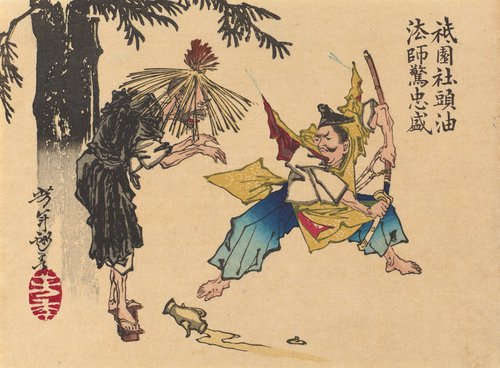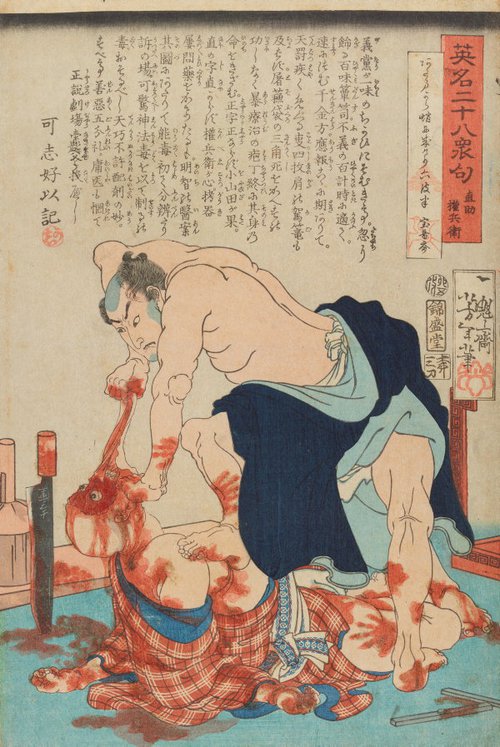Title
The moon of the Milky Way, from the series One hundred aspects of the moon
September 1886
Artist
-
Details
- Alternative title
- Ginga no tsuki
- Place where the work was made
-
Japan
- Period
- Meiji period 1868 - 1912 → Japan
- Date
- September 1886
- Media category
- Materials used
- colour woodblock; ōban
- Dimensions
- 39.0 x 26.0 cm
- Signature & date
Signed and dated.
- Credit
- Yasuko Myer Bequest Fund 2012
- Location
- Not on display
- Accession number
- 258.2012.40
- Copyright
- Artist information
-
Tsukioka Yoshitoshi
Works in the collection
- Share
-
-
About
The two figures looking at each other across the Milky Way represent the stars Vega and Altair, or in Japanese (originally Chinese) mythology, the Lord of Heaven’s daughter Shokujo (the Weaver Maiden) and Kengyū (the celestial Herdsboy). Because Shokujo’s matrimonial duties led her to neglect her work, her father decreed that she and Kengyū could only meet once a year. The story is the basis of the Japanese Tanabata festival, during which young people write romantic poems and hang them on bamboo branches in front of their houses. Traditionally, girls pray to the Shokujo star for sewing skills and a faithful husband like Kengyū.
-
Places
Where the work was made
Japan
-
Exhibition history
Shown in 1 exhibition
Yoshitoshi: One Hundred Aspects of the Moon, Art Gallery of New South Wales, Sydney, 20 Aug 2016–20 Nov 2016
-
Bibliography
Referenced in 3 publications
-
Yuriko Iwakiri, Yoshitoshi Tsuki hyakushi (Yoshitoshi’s One hundred aspects of the moon), Tokyo, 2010. General reference; Another edition was reproduced
-
John Stevenson, Yoshitoshi's One hundred aspects of the moon, Seattle, 1992, (colour illus.). cat.no.40; Another edition was reproduced
-
Chris UHLENBECK, Yoshitoshi: masterpieces from the Ed Freis collection, Leiden, 2011, 135-136. General reference; Another edition was reproduced
-




